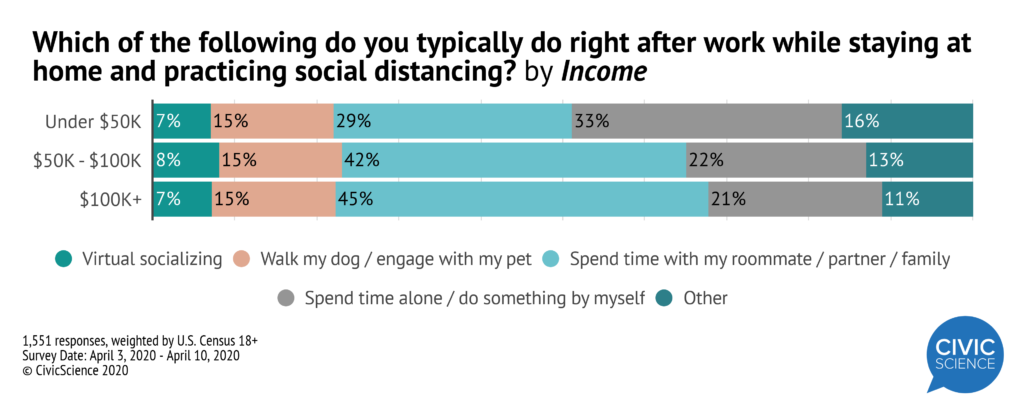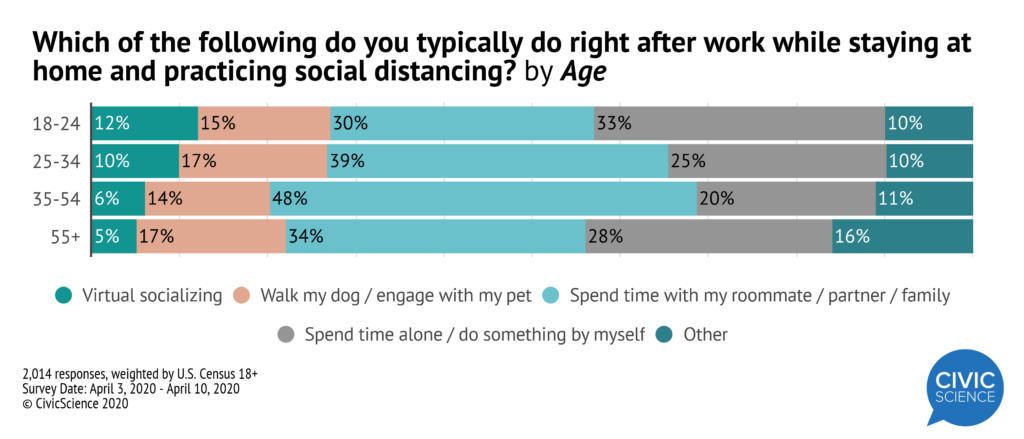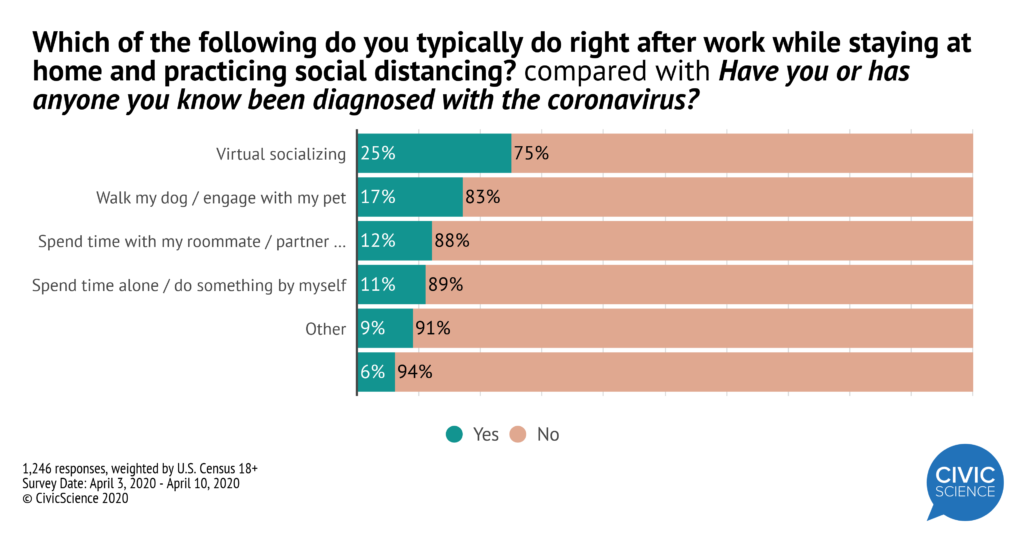The landscape of after work activities looks very different than the last time CivicScience studied it. To take the current pulse of how Americans are using their post-work hours, CivicScience asked more than 2,300 U.S. adults about their modified habits.
According to the data, 40% of people who work choose to spend time with a roommate, partner, or family member, while 25% spend time alone. While virtual socializing does happen, it comes in at 8%. In the original study, 38% of respondents were participating in some form of in-person socializing. So at least when it comes to connecting with those outside of the home, the coronavirus seems to have curtailed this type of pastime for many.
While virtual socializing does happen, it comes in at 8%. In the original study, 38% of respondents were participating in some form of in-person socializing. So at least when it comes to connecting with those outside of the home, the coronavirus seems to have curtailed this type of pastime for many.
Virtual socializing is almost equally used across income levels. Low-income earners are spending more time alone, while middle- to high-income earners are spending time with those they live with.  Much of this data seems to reflect the different life stages of the respondents, and how that impacts the ability to socialize while social distancing. For example, those 35-54 are the most likely to be spending time with a roommate, partner or family. This age-range also coincides with the time in life when adults are most likely to have others in their home. To further support this, younger adults are the most likely to be spending time alone–a fact that could reflect a quarantine situation that does not involve parents or partners.
Much of this data seems to reflect the different life stages of the respondents, and how that impacts the ability to socialize while social distancing. For example, those 35-54 are the most likely to be spending time with a roommate, partner or family. This age-range also coincides with the time in life when adults are most likely to have others in their home. To further support this, younger adults are the most likely to be spending time alone–a fact that could reflect a quarantine situation that does not involve parents or partners.
Job Stress Leads to More IRL Connection
More than ever before, the home environment is playing a much bigger role in one’s ability to socialize after work. However, other factors such as job stress are also important metrics.
As the data show, those who are very concerned about their job are also the most likely to be seeking connections in real life with their pets. Those who are not at all concerned are spending the most time with loved ones or on their own.
Virtual Connection Important for Those Close to the Virus
Personal connection to the virus may also be impacting how Americans are spending their quarantine after work. As the data show, those who have had the virus personally or know someone who was diagnosed with it are the most likely to be socializing virtually. Clearly, after-work activities are taking on an entirely new form as Americans spend more time at home. And while some living situations encourage time spent socializing in person–with housemates or pets–others situations, such as living alone or having a personal connection to the virus, encourage a more concerted effort to keep in touch.
Clearly, after-work activities are taking on an entirely new form as Americans spend more time at home. And while some living situations encourage time spent socializing in person–with housemates or pets–others situations, such as living alone or having a personal connection to the virus, encourage a more concerted effort to keep in touch.








